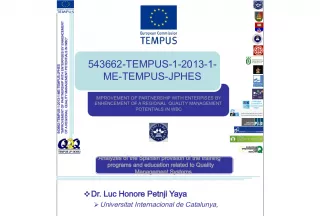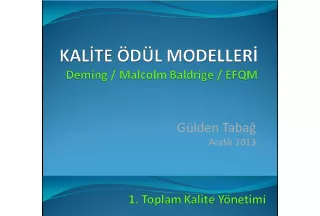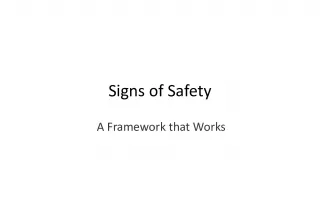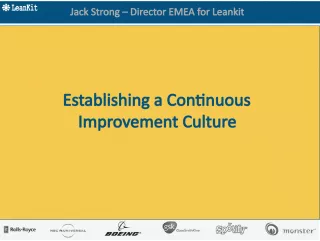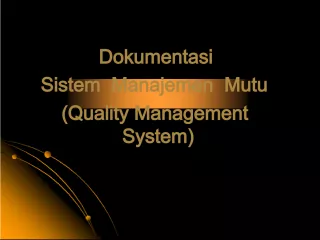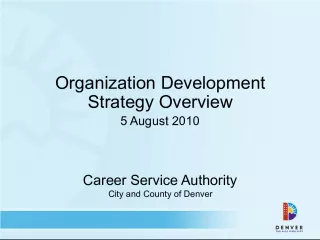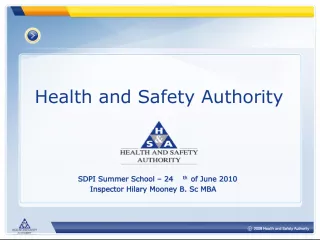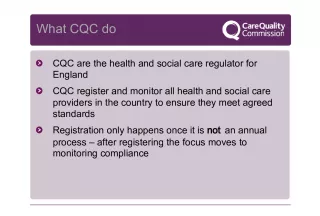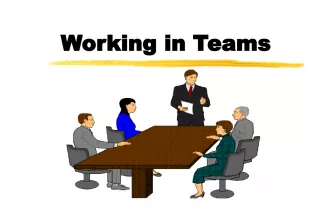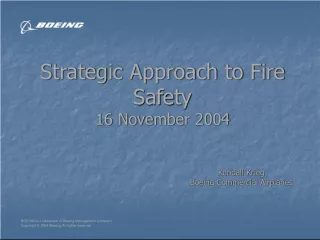Revolutionizing Quality, Safety Culture, and Change Management
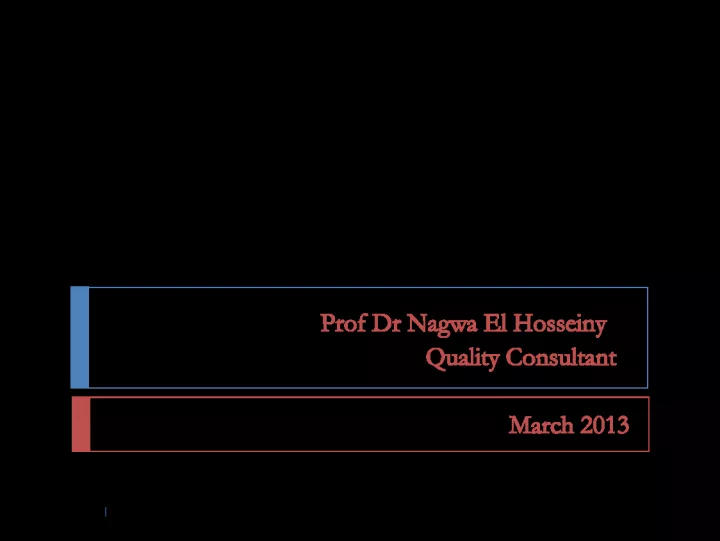

Prof Dr Nagwa El Hosseiny advocates for a revolution in the approach towards quality, safety culture, and change management within organizations. A key factor in this revolution is the understanding and cultivation of organizational culture, the shared beliefs, perceptions, and expectations that shape institutional excellence.
- Uploaded on | 3 Views
-
 annelot
annelot
About Revolutionizing Quality, Safety Culture, and Change Management
PowerPoint presentation about 'Revolutionizing Quality, Safety Culture, and Change Management'. This presentation describes the topic on Prof Dr Nagwa El Hosseiny advocates for a revolution in the approach towards quality, safety culture, and change management within organizations. A key factor in this revolution is the understanding and cultivation of organizational culture, the shared beliefs, perceptions, and expectations that shape institutional excellence.. The key topics included in this slideshow are . Download this presentation absolutely free.
Presentation Transcript
1. Quality , Safety culture & Change Management approaches It is time for a revolution Prof Dr Nagwa El Hosseiny Quality Consultant March 2013 1
2. What Is Organizational Culture? 2 Organizational culture is used to describe the shared beliefs, perceptions, and expectations of individuals in organizations. Organizational culture has been variously described as institutional excellence, climate, empowerment, and total quality and human resource management.
3. Surface Culture Above the Surface Emotional Load: Relatively Low Unspoken Rules Just Below the Surface Behavior-Based Emotional Load: High Unconscious Rules Far Below Surface Value-Based Emotional Load: INTENSE Deep Culture 3
4. Surface Culture Above the Surface Emotional Load: Relatively Low Food * Dress * Music * Visual Arts * Drama * Crafts * Dance * Literature * Language * Celebrations * Games The kind of VISUAL elements of culture that are easily identifiable, easily shared, and easily accessed. “Everybody does it differently” 4
5. Unspoken Rules Just Below the Surface Emotional Load: High Deep Culture Courtesy * Contextual Conversational Patterns * Concept of Time * Personal Space * Rules of Conduct * Facial Expressions * Non-Verbal Communication * Body Language * Touching * Eye-Contact * Patterns of Handling Emotions “What are you DOING?” Elements of culture that are perhaps not as easily pointed out, more ingrained into society. Behavior-based. 5
6. Unconscious Rules Far Below Surface Emotional Load: INTENSE Deep Culture Notions of Modesty * Concept of Beauty * Courtship Practices * Relationships to Animals * Notions of Leadership * Tempo of Work * Concepts of Food * Ideals of Childrearing * Theory of Disease * Social Interaction Rate * Nature of Friendships * Tone of Voice * Attitudes Towards Elders * Concept of Cleanliness * Notions of Adolescence * Patterns of Group Decision-Making * Definition of Insanity * Preference for Competition or Cooperation * Tolerance of Physical Pain * Concept of “self” * Concept of Past and Future * Definition of Obscenity * Attitudes toward Dependents * Problem-Solving Roles in Relation to Age, Sex, Class, Occupation, Kinship, and so forth The things that don’t get talked about, and often times aren’t even realized. Value-Based. “You just don’t DO that!” 6
7. What Is Organizational Culture? 7 Organizational culture does not automatically occur when an organization is created. A group must have stability, shared experience, and history to form a culture. Over time, especially if the organization competes successfully, the staff learns how to cope with external demands and maintain internal stability.
8. Why is Culture Important in Healthcare ? 8 Cultural forces are powerful determinants of health- related behavior A lack of knowledge about or sensitivity to health beliefs and practices of different cultures can limit one’s ability to provide quality healthcare
9. What Is Safety Culture? 9 An effective safety culture Sees errors as learning opportunities. Motivates individuals to talk about their own experiences by encouraging such experiences to be shared. Responds to problems that are identified. Does not unfairly penalize those who have made errors. Has a reporting system that is seen to uncover the underling causes of incidents.
10. Measures of Success of safety culture survey and leader walk rounds 10 Number of errors reported per month from voluntary reporting systems Number of safety-based changes made by managers per year Percent of changes in overall surveillance data (for example, infection rates)
11. Organizational culture is clearly related to Quality and Safety 11 In general and quality healthcare in particular. Organizational culture affects several organizational dimensions, including : job satisfaction, attention to error, learning, and overall quality of performance .
12. Change Management 12 Definition Has been defined by Prosci (2006) as “a set of processes, tools and practices that are used to manage the people side of change” Change Management becomes a bridge between “implementing a solution” and an organization ultimately realizing the benefits associated with the change”
13. The Eight Step Process of Successful Change (John Kotter) Make it Happen Communicate for Understanding and Buy In Empower Others to Act 5 6 4 7 Make It Stick Create a New Culture 8 Decide what to do 3 Set the Stage Pull Together the Guiding Team Create a Sense of Urgency 2 1 Develop the Change Vision and Strategy Produce Short-Term Wins Don’t Let Up 13
14. Culture Change A successful Example 14 “ When cases of VAP were more frequent, each new case was seen as ‘something that happens.’ Today, if a VAP occurs, we ask ‘What did we do wrong? What can we do better?’ It’s an obsession with failure. Our goal is to have zero.”
15. To summarize …………… 15 4
16. 16 Quality and safety cultures are two related important topics that need to be changed (improved) in order to achieve excellence of healthcare services
17. Health care Leaders 17 They need different ways of thinking , learning and working to meet the three challenges of Today: 1-Provide safe, effective and efficient care 2-Attract and retain talented professionals and staff 3-Thrive in the new reform systems that rewards the higher quality
18. Role of Leaders in improving the culture of Quality 18 There are a number of methods for promoting a quality culture, but they all start with leadership embracing the promotion of quality through : The articulation of the organization’s mission and vision, Engagement of people throughout the organization in quality and safety , and attention to learning .
19. Ten safety culture dimensions 19 1. Supervisor/manager expectations and actions promoting patient safety 2. Organizational learning—Continuous improvement 3. Teamwork within units 4. Communication openness 5. Feedback and communication about error 6. Non punitive response to error 7. Staffing 8. Hospital management support for patient safety 9. Teamwork across hospital units 10. Hospital handoffs and transitions
20. Change Agenda Carries Risk 20 To transform care, hospital leaders must be willing to take prudent risks Board and CEO can’t demand improved performance without being willing to invest institutional resources, knowing that not every idea will be successful
21. Send a Clear Message 21 Transformation is a high priority We’re in it for the long term Everyone is responsible for quality and safety Engagement is not up for debate
22. Send a Clear Message 22 Change the conversation Champions of improvement teams Link compensation to achieving improvement goals
23. Improving Quality of care is a Win-Win Process 23 In the best interest of patients and families In the best interest of the organization
24. Conclusion 24 • Do the right thing for patients • Financial results will follow • Large-scale transformation is the right thing to do — and the smart thing
25. 25 Tell me and I’ll forget; Show me and I may remember; Involve me and I’ll understand Chinese Proverb Thank You
